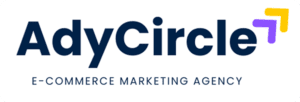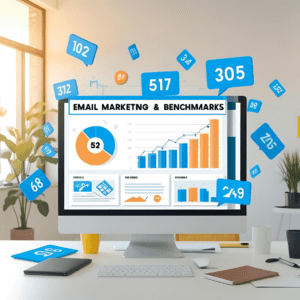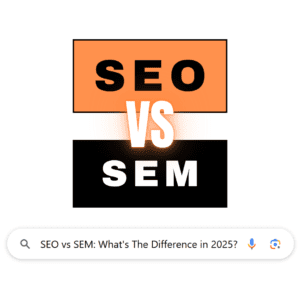Table of Contents
In today’s digital age, brands are bypassing traditional retail channels and selling directly to consumers. This shift is known as, and it has revolutionized the way businesses operate online.
D2C (Direct-to-Consumer) marketing allows brands to control their messaging, pricing, and customer relationships without relying on intermediaries. With the rise of eCommerce, social media, and data-driven strategies, many businesses are leveraging this model to build stronger connections with their audience and scale rapidly.
What is D2C Marketing?
refers to a business model where companies sell their products directly to consumers, eliminating third-party retailers, wholesalers, or distributors. This direct approach gives brands more control over their branding, pricing, and customer experience.
Key Characteristics:
- Direct Customer Interaction: Brands manage their own customer relationships and collect first-party data.
- Online-First Approach: Most D2C brands operate primarily through eCommerce websites and social media.
- Brand Control: Companies dictate their pricing, marketing, and messaging strategies.
- Subscription & Personalization Models: Many D2C businesses offer subscription-based or highly personalized product experiences.
Read more about successful D2C brands
Benefits:
Adopting a strategy provides numerous advantages for brands looking to scale:
1. Higher Profit Margins
By cutting out middlemen, brands keep more revenue and avoid retailer markups.
2. Direct Customer Relationships
Owning customer data allows for personalized marketing, improved engagement, and better customer retention.
3. Stronger Brand Identity
D2C companies maintain complete control over their branding, storytelling, and customer experience.
4. Faster Market Adaptation
Without intermediaries, businesses can quickly adjust pricing, promotions, and product offerings based on real-time data.
5. Increased Customer Loyalty
A direct relationship fosters brand loyalty through personalized experiences, subscription models, and exclusive deals.
Learn about D2C marketing benefits
How to Start a D2C Brand
Launching a D2C brand requires careful planning and execution. Follow these steps to get started:
1. Identify Your Niche and Audience
Research your target market, competitors, and unique selling points (USPs) to position your brand effectively.
2. Develop a Quality Product
Invest in product development, ensuring it meets customer needs and stands out from competitors.
3. Build a Strong Online Presence
Create a user-friendly website, optimize it for SEO, and establish a strong presence on social media platforms.
4. Implement Digital Marketing Strategies
Leverage paid ads, influencer partnerships, email marketing, and content marketing to drive traffic and sales.
5. Optimize Customer Experience
Offer seamless shopping experiences, fast shipping, and responsive customer support to enhance satisfaction.
Top Marketing Channels for D2C Brands
Successful D2C brands utilize multiple marketing channels to engage and convert customers.
1. Social Media Advertising
Platforms like Facebook, Instagram, and TikTok provide powerful tools for targeted advertising and brand awareness.
2. Search Engine Optimization (SEO)
Optimizing website content helps brands rank higher on Google, increasing organic traffic.
3. Email & WhatsApp Marketing
Direct communication channels like email and WhatsApp allow brands to engage customers with personalized offers.
4. Influencer & Affiliate Marketing
Partnering with influencers helps brands tap into new audiences and build credibility.
5. Retargeting & Paid Ads
Using Google Ads and Facebook Retargeting helps re-engage potential customers who visited the site but didn’t purchase.
D2C Marketing Strategies for Success
To achieve long-term success, D2C brands must implement the right marketing strategies. Here are some effective approaches:
1. Personalization and Customer Engagement
Use AI-driven recommendations, email segmentation, and chatbot support to offer a tailored shopping experience.
2. Storytelling and Brand Building
Connect emotionally with your audience through compelling brand storytelling, user-generated content, and behind-the-scenes insights.
3. Leveraging Data and Analytics
Track customer behavior, website performance, and campaign metrics to optimize your marketing efforts.
4. Multi-Channel Marketing Approach
Expand beyond a single platform by integrating social media, SEO, paid ads, and content marketing.
5. Community Building
Engage with customers via forums, social media groups, and loyalty programs to foster a strong brand community.
Challenges of D2C Marketing
Despite its advantages, D2C marketing comes with its own set of challenges:
- High Customer Acquisition Costs (CAC): Paid advertising can be expensive, requiring strong brand differentiation.
- Logistics & Fulfillment Issues: Managing inventory and shipping can be complex, especially for growing brands.
- Brand Trust & Credibility: New brands must work harder to establish trust without the backing of large retailers.
- Competition with Retail Giants: Standing out against Amazon, Walmart, and other retail giants requires strong marketing strategies.
Conclusion
D2C marketing has transformed the way brands connect with consumers, allowing for greater control, higher profit margins, and stronger relationships. By leveraging digital marketing, data-driven strategies, and customer-centric approaches, businesses can scale effectively and build long-term brand loyalty.
For expert guidance on growing your D2C brand, visit AdyCircle, a leading D2C Ecommerce marketing agency. Learn more about our services
FAQs
D2C involves selling directly to consumers, whereas B2C typically includes third-party retailers.
Social media, SEO, email marketing, and paid ads are the most effective channels.
They manage support in-house via email, chat, and social media for a seamless experience.
Fashion, beauty, home decor, and wellness brands see great success with D2C strategies.





